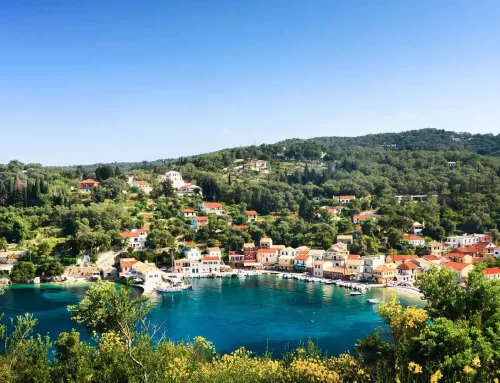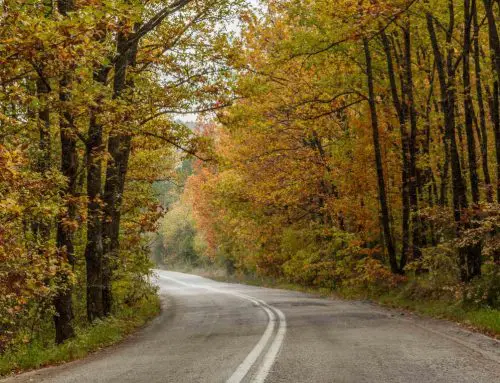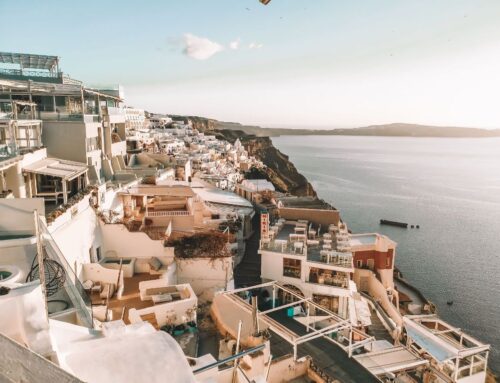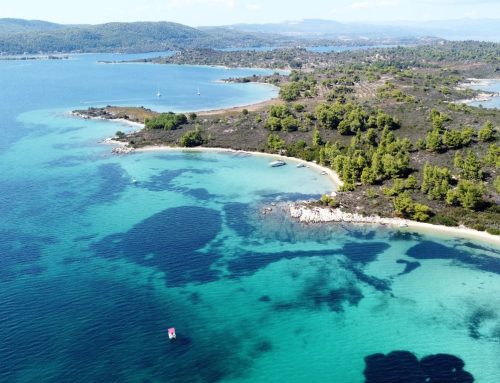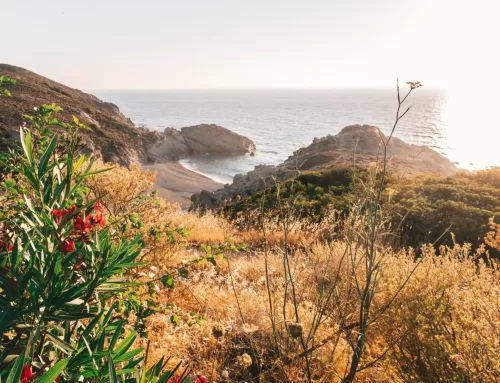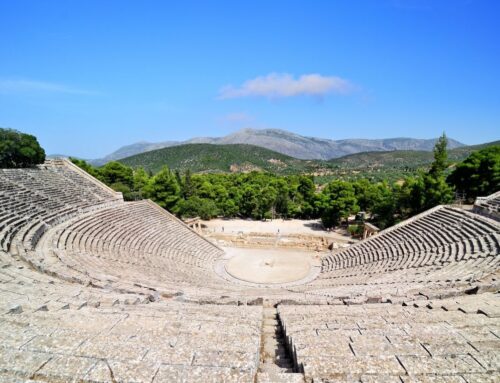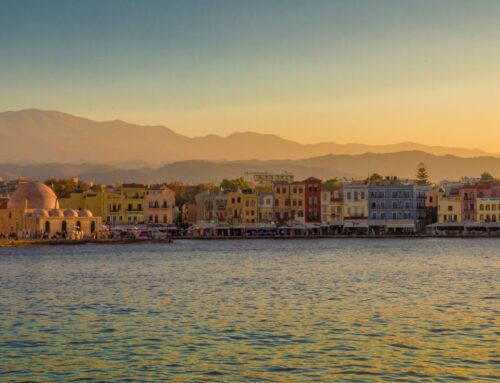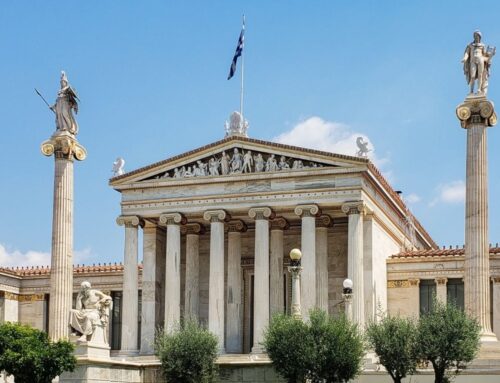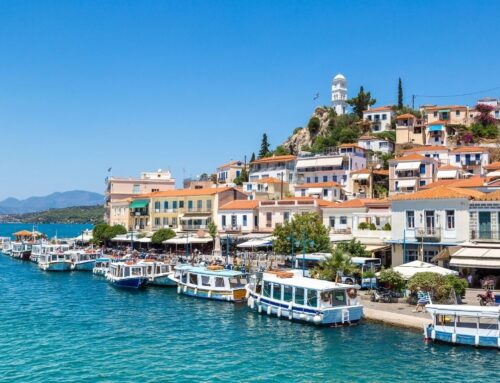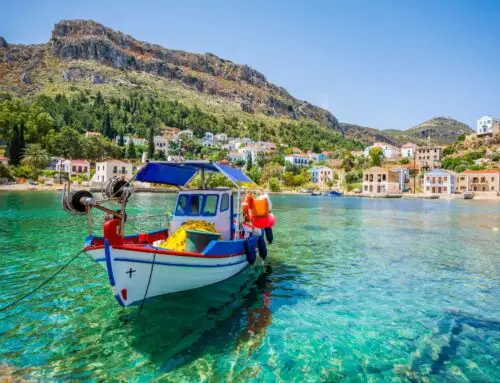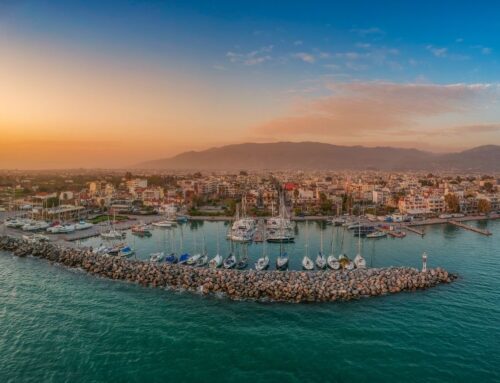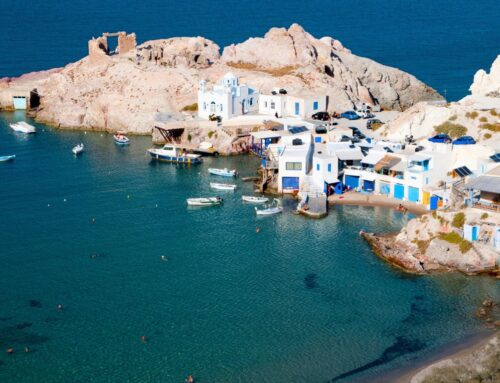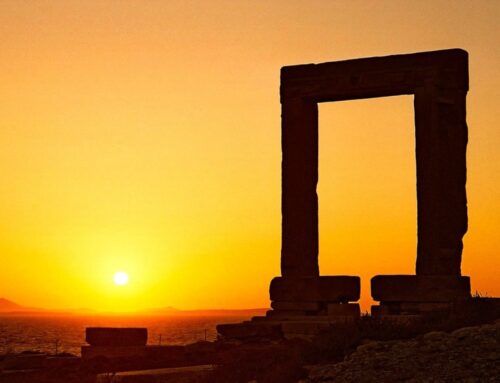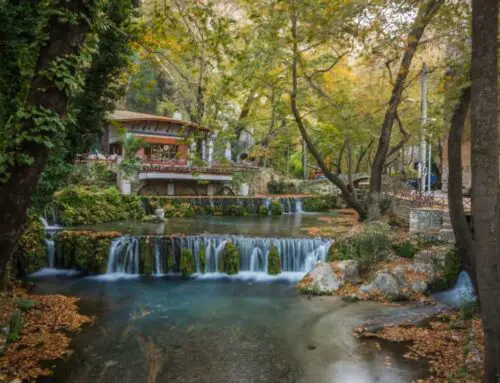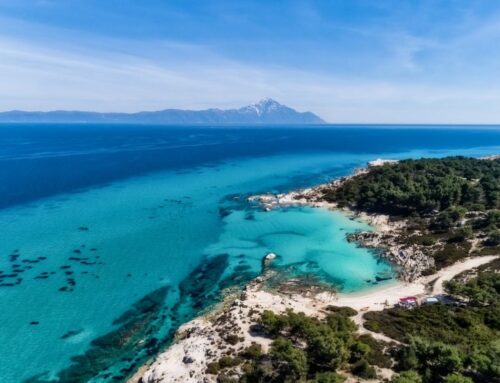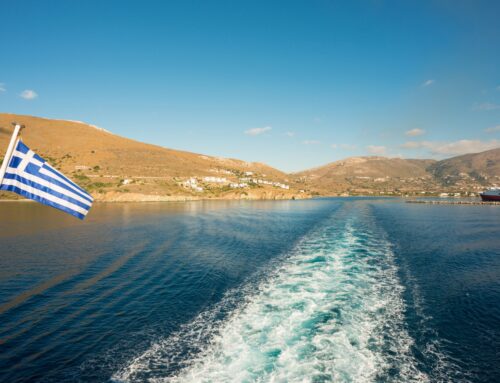10 Castles Around The Peloponnese You Need To See
10 Castles Around The Peloponnese You Need To See
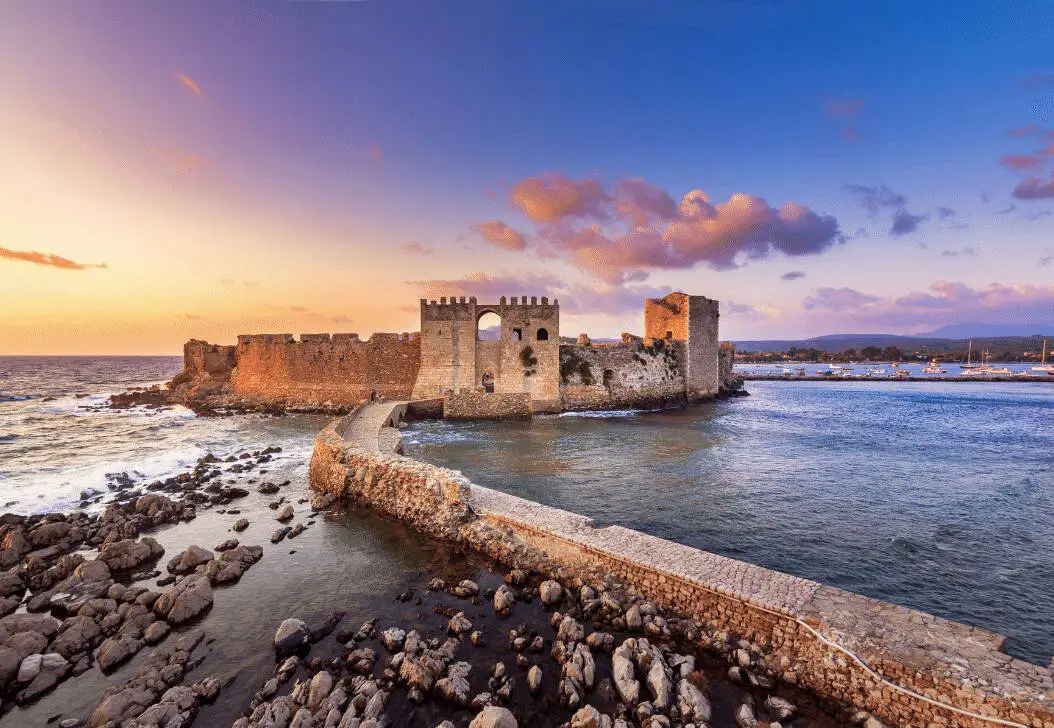
☞ Table of Contents:
Castles, myths and legends in the Peloponnese peninsula! It is well known that Greece has changed many hands throughout its long history.
During the middle ages, a big part of the country, the Peloponnese, was controlled by the Franks and the Venetians. They brought with them their style and traditions. They also built big castles in every important port city or commercial centre in the Peloponnese, in order to house their leaders or for safety reasons. These impressive architectural structures, remain to this day, giving the Peloponnese a different aura than most other places in Greece.
Here comes a list of those that you have to see!
Chlemoutsi castle
Number one on this list I could only place Chlemoutsi castle.
Even though I’ve been there several times, I am sure that I will visit this one over and over again.
On the west coast of the Peloponnese in the region of Ilia, there is a small village called Kastro (castle), that took its name from Chlemoutsi castle, which sits on top of the hill above the village. It was built around 1220 and nowadays it is one of the most well-preserved fortifications. Built by the Franks, in a strategic position- really close to the port of the area Glarentza (today is Killini), the castle has been under the control of several rulers (the Principality of Achaea, the Despotate of the Morea, the Byzantines, the Ottoman Empire and more). Although the castle’s interior is really beautiful with the paving alleys and the long walls, the view is the element that mesmerizes! I suggest visiting the castle in the afternoon, if possible, to enjoy the breathtaking view during sunset. Go as high as is allowed and just observe the sky and the sea! If you have enough time, you can also visit the castle’s museum.
What’s more? Every summer the municipality organizes a festival with theatrical plays and concerts. The stage is set inside the castle walls, in a magical scenery under the summer moon.
My favorite type of concert to attend in the castle is the medieval music ones. The combination of the profound, spine-chilling instrumental sounds with the medieval walls is unique.
In the village, there are plenty of tavernas and rooms to accommodate you. I recommend you go to ‘Aenaon’, a café-restaurant with an amazing view. The Ionian Sea, with the stunning Zakynthos and Cephalonia islands, are spread before you!
Photographer Ronny Siegel
Monemvasia Castle
This time we travel to the south of the Peloponnese.
On the easternmost “leg”, we find the village of Monemvasia, an attraction for visitors from all over the world. The medieval city is enclosed inside the walls of a Byzantine fortress. We can say that the whole village is a fortress-city. Its history starts around 580 AD and goes all the way up to now.
Monemvasia is built on an island rock that is exclusively connected with the mainland via one, narrow road. That is how it was named; “Moni emvasi” meaning one entrance. Inside the city, there are a lot of really old churches, photogenic alleys to get lost in, and unique architectural buildings.
It is true that the majority of those who choose to visit Monemvasia, are couples. The locals say that those who get married in the city will never divorce! So if you are thinking of having your wedding in Greece, consider Monemvasia too! In any other case, do not be afraid to travel with a group of friends, family or even alone. This magical place will not let you down, no matter the season!
Kyparissia Castle
Kyparissia is a small town in northwestern Messinia, on the west coast of the Peloponnese.
Today, the city has expanded, but the old town retains its old-time charm. Climb up the hill and wander along the narrow cobblestone streets. On top, you will find the castle of Kyparissia; one of the most beautiful castles in the country. It combines the amazing view, nature, and unique architecture of the area!
The castle is also called the castle of Arcadia or the castle of giants. It was built in the place of an ancient acropolis during the Byzantine period, and then, the Franks rebuilt it in its current form. In the interior of the castle, you will find a small theatre and former residences surrounded by lush vegetation. Depending on which side you are in, the view varies from the nearby mountain to the Ionian Sea and the old town!
Photographer: Roman Klementschitz,
Palamidi fortress
Nafplion, the former, picturesque Greek capital, has two very impressive castles.
The first, Palamidi fortress, is perched on top of the city. 999 steps connect the fortress with the center. Follow the advice of the locals and climb all 999, a must-have experience. Of course, there is always the alternative of driving. In the 18th century, the Venetians constructed the fortress with 8 independent bastions. After the Greek War of Independence, Palamidi was used as a prison and it is said that it was one of the cruelest.
Today, a visit in Nafplion is considered incomplete without sightseeing the fortress and the amazing scenery that it offers.
Bourtzi castle
The second castle in Nafplion is Bourtzi.
In the middle of the city’s harbor, this castle by the sea has become the emblem of the city. This was another castle built by the Venetians, with the purpose of protecting the town. The function of the castle changed many times throughout the years; a fortress that turned into a prison, the residence of the executioners of convicts and even a hotel!
The question that emerges is whether to admire Bourtzi from the mainland and have the idyllic postcard image as a memory or to take the boat (there is a departure every few minutes from the harbor of Nafplion and the return ticket is around 4.5 euro) and actually set foot on the sea-fortress. If you have time, choose the second option, because apart from your visit to the castle, you will get a panoramic view of the whole city!
Methoni Castle
Once again we are in Messinia, on the westernmost “leg” of the Peloponnese.
On the edge of the small town of Methoni, a graphic castle beautifies the scape. The Venetians also built this one, upon a rocky promontory. A stone bridge gives access to those who wish to visit the fortress. The impressive gate, the remaining parts of the Turkish bathhouses and a separate fortified islet are enough to catch your interest. The castle is one of the biggest in the Mediterranean, and definitely a must-visit one!
Koroni Castle
On the same “leg” with Methoni, but on the other side, is a small coastal city, Koroni.
Its castle is what makes it unique! On the edge of the city, at the seaside, this Venetian architectural masterpiece looms high up to the sky. One of the few castles that is surrounded by both residences and churches that are still functional. Initially constructed in the 13th century by the Venetians, it was modified by the Ottomans three centuries later. Pay attention to the archaeological collection, the tombs, the octagon tower, and the underground rain tanks.
While climbing up the hill through the picturesque streets, it will feel like you’re traveling back in time. At the top, the view of the Messinian Gulf will definitely take your breath away!
This castle might not be the most well-preserved, but the area of Koroni is for sure. You can find some marvelous beaches like Peroulia and Zagga. Plus, do not leave Koroni without visiting the church of Panagia Eleistra, just above Zagga beach. The view and the scenery are not to be missed!
Rio Castle
In Greece, we have our own city of Rio.
It might not be as colorful or vibrant as the Brazilian one, but it has one of the cutest castles in the Peloponnese. Rio is a suburb of the third largest Greek city, Patras, and is the place where the Rio-Antirrio bridge connects the Peloponnese with Central Greece. The combination of this state-of-the-art bridge along with the Ottoman fortress is superb! Moreover, the water element dominates the space. Apart from the sea, a small lake decorates the scenery, which is perfect for a wedding ceremony! (seriously, I have attended one there).
The castle was built in order to protect the passage from the Ionian Sea to the Gulf of Corinth. At the end of the 19th century, the state used it as a prison, while in the Second World War the Germans took it under their control.
Mani towers
This time we are not talking about one specific fortress, but for the architectural symbol of a whole region.
Mani is one of the most historical places in the country. The people are really proud of never having been enslaved by a foreigner as well as the beauty of their homeland! The most characteristic feature of Mani is the stone towers in every village. The towers were originally built as the homes of the locals. They decided to construct them in that way for safety reasons during the Byzantine era. Today, a lot of them still stand in very good shape and some are inhabited.
Owing to the uniqueness of the architectural style, it is quite common nowadays to construct new towers! They are serving as residences, shops, and hotels. If you decide to spend one or more nights in Mani, choose a tower hotel; the experience is fantastic!
Chalandritsa
In the middle of Achaea, between the mountains in the northern part of the Peloponnese, the scenic small town of Chalandritsa emerges. I could not finish this guide without mentioning this one, where I have also spent some of my childhood holidays.
If you are in the mood for exploring the mountainous area of Achaea, pass by Chalandritsa. In the city centre, the old town with its small narrow alleys (really hard to drive through) will charm you. The remaining parts of the tower (the locals call it Palaiopirgos, which means old tower) used to be part of a Frankish castle, but now stands filled with vegetation. As a result, the only way to get in is from the south entrance , after walking among some houses. After strolling around, choose one of the tavernas to dine in. In the summertime, you might come across one of the traditional Greek festivals, “panigiri”. Blend in with the locals and enjoy a nice summer night!!
P.S. Because the majority of the castles in the Peloponnese are archaeological and historical spaces, they are under the control of the Ministry of Culture. So, if you do not want to miss a thing, check the days, the hours of operation, and the ticket prices of each one separately. For those that are not open 24h, please visit the website of the Ministry of Culture. You will find all the necessary information there.
*Disclaimer: This page includes affiliate links. If you decide to book something through one of them, I might get a little bonus, but it won't cost you anything extra.*



